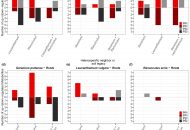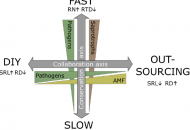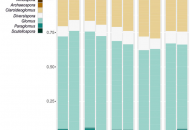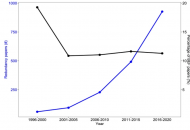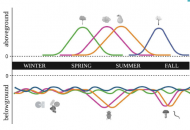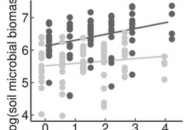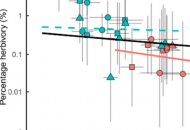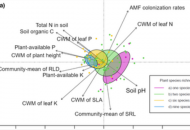Publication
-
New publication from Ristok et al. in Ecology and Evolution: Plant diversity and soil legacy independently affect the plant metabolome and induced responses following herbivory
Plant and soil biodiversity can have significant effects on herbivore resistance mediated by plant metabolites. Here, we disentangled the independent effects of plant diversity and soil legacy on constitutive and…
-
New publication from Hennecke et al. in New Phytologist: Responses of rhizosphere fungi to the root economics space in grassland monocultures of different age
Recent studies on root traits have shown that there are two axes explaining trait variation belowground: the collaboration axis with mycorrhizal partners and the conservation (‘fast – slow’) axis. However,…
-
New publication from Pinheiro Alves de Souza et al. in Microbial Ecology: Deterministic development of soil Microbial communities in disturbed soils depends on microbial biomass of the bioinoculum
Despite its enormous importance for ecosystem services, factors driving microbial recolonization of soils after disturbance are still poorly understood. Here, we compared the microbial recolonization patterns of a disturbed, autoclaved…
-
New publication from Albracht et al. in Frontiers in Soil Science: Effects of recurrent summer droughts on arbuscular mycorrhizal and total fungal communities in experimental grasslands differing in plant diversity and community composition
Introduction: Biodiversity loss and climate change have been determined as major global drivers affecting ecosystems and their functioning. In this context, drought was shown to have negative effects on ecosystems…
-
New publication from Eisenhauer et al. in npj Biodiversity: Reconsidering functional redundancy in biodiversity research
A key question in ecological research is whether biodiversity is important for ecosystem functioning. After approximately three decades of empirical studies on this topic, it is clear that biodiversity promotes…
-
New publication from Bonato Asato et al. in Ecology and Evolution: On the phenology of soil organisms: Current knowledge and future steps
Phenology is the study of timing of periodic activities in biological life cycles. It describes an inherent component of ecosystem dynamics, and shifts in biological activity have been increasingly recognized…
-
New publication from Eisenhauer et al. in National Science Review: The heterogeneity–diversity–system performance nexus
Ever-growing human population and nutritional demands, supply chain disruptions, and advancing climate change have led to the realization that changes in diversity and system performance are intimately linked. Moreover, diversity…
-
New publication from Maciá-Vicente et al. in Molecular Ecology: The structure of root-associated fungal communities is related to the long-term effects of plant diversity on productivity
Root-associated fungi could play a role in determining both the positive relationship between plant diversity and productivity in experimental grasslands, and its strengthening over time. This hypothesis assumes that specialized…
-
New publication from Bröcher et al. in Oecologia: Effects of plant diversity on species-specific herbivory: patterns and mechanisms
Invertebrate herbivory can shape plant communities when impacting growth and fitness of some plant species more than other species. Previous studies showed that herbivory varies among plant species and that…
-
New publication from Dietrich et al. in Ecology and Evolution: Linking plant diversity–productivity relationships to plant functional traits of dominant species and changes in soil properties in 15-year-old experimental grasslands
Positive plant diversity–productivity relationships are known to be driven by complementary resource use via differences in plant functional traits. Moreover, soil properties related to nutrient availability were shown to change…
Posts navigation
We’ve made the move from Twitter to Bluesky. Follow us there for all the latest updates.

